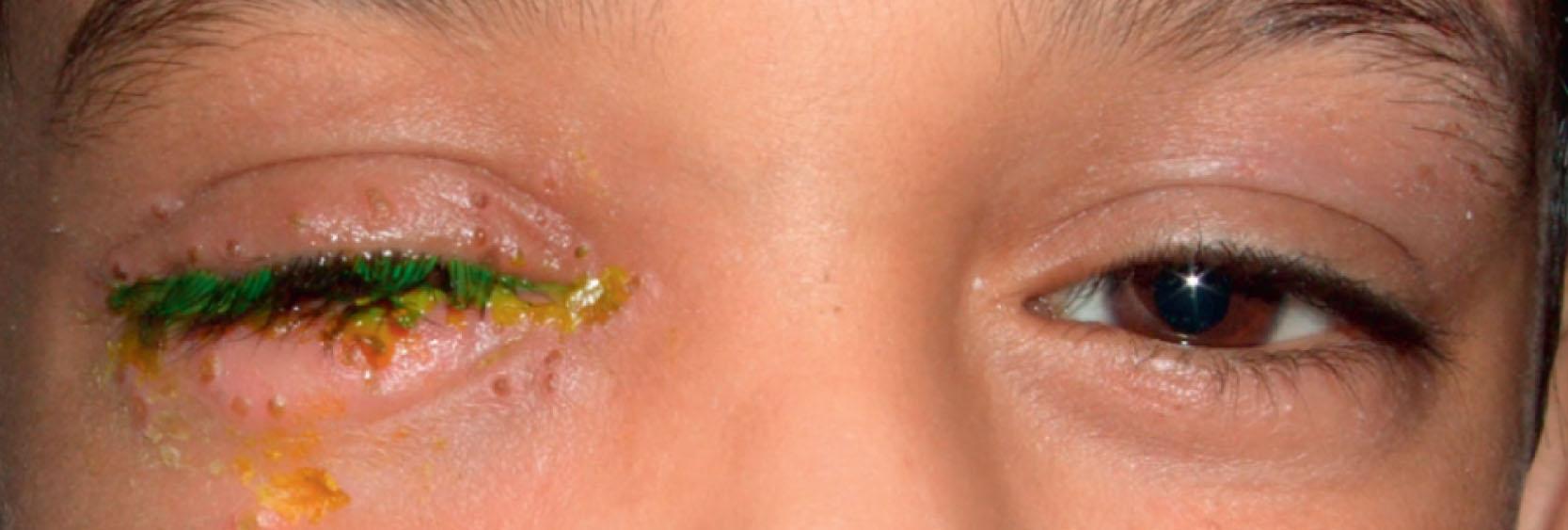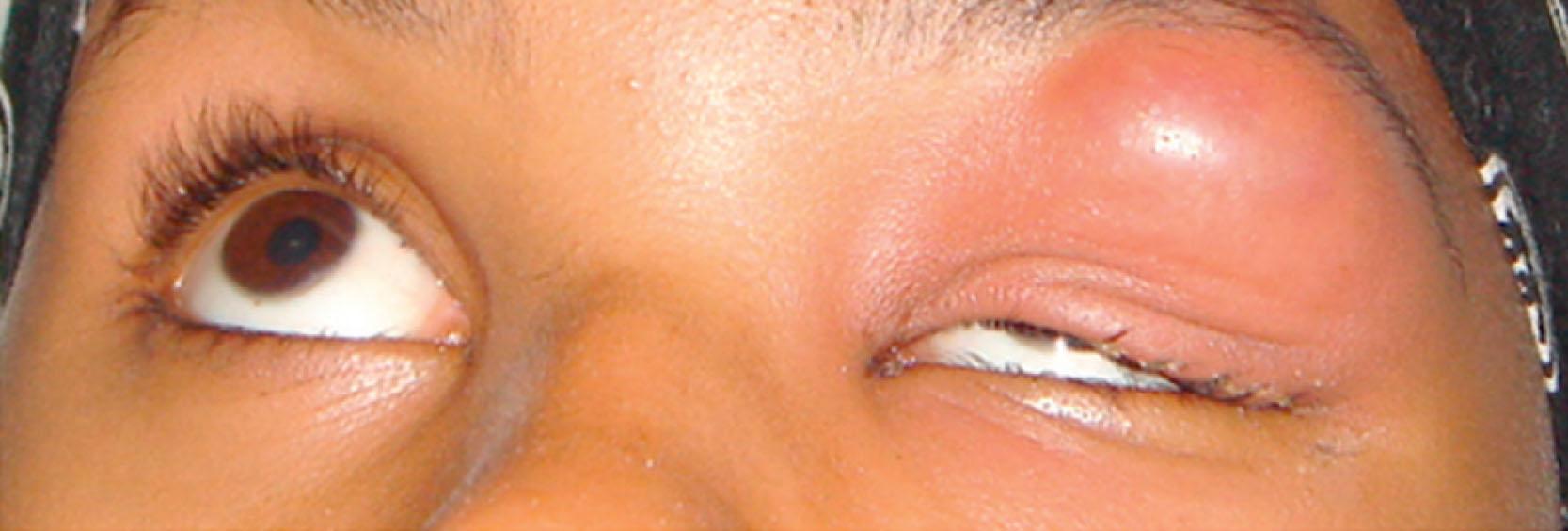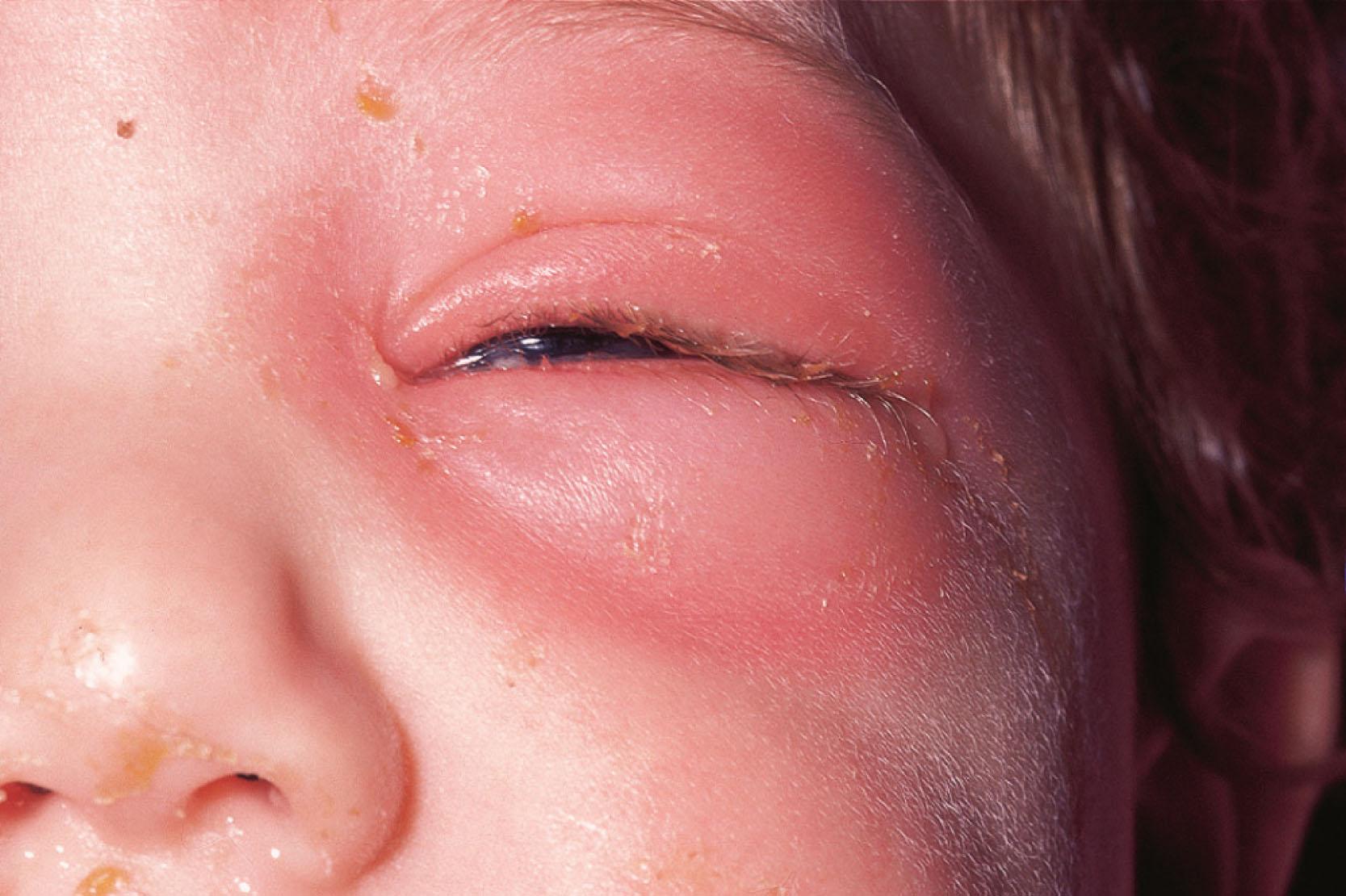Physical Address
304 North Cardinal St.
Dorchester Center, MA 02124
The diagnosis of infective preseptal and orbital cellulitis is clinical. The goal is to prevent rapid deterioration and serious sequelae such as visual loss, cavernous sinus thrombosis, cerebral abscess, osteomyelitis, and septicemia. Children are at greater risk of these serious complications than adults; however, they are rare if early diagnosis is made and treatment is initiated. It must be managed promptly with appropriate antibiotics and medical support from a multidisciplinary team consisting of pediatricians, ophthalmologists, ear, nose and throat (ENT) surgeons, nurses, and radiologists. Regular evaluation for progression of signs or deterioration of the clinical picture is essential. Imaging may be necessary to determine the extent of the disease.
The orbital septum marks the anterior extent of the orbit. Its firm attachment to the orbital rim along with the attachment of the orbital periosteum is referred to as the arcus marginalis; it extends to the upper and lower tarsal plates. Preseptal cellulitis is a descriptive term for patients who present with symptoms and signs of inflammation confined largely to the eyelids: pain, redness, and swelling. The orbital septum acts as a physical barrier to lesions spreading posteriorly to the orbit. Orbital cellulitis involves infection of the postseptal space and usually spreads from adjacent infected sinuses, commonly the ethmoids. Many vessels and nerves pierce the thin lamina papyracea between the ethmoid sinuses and the orbit: infection easily spreads through these and other naturally occurring perforations, and may lift off the loosely attached periosteum within the anterior orbit, resulting in a subperiosteal abscess. An orbital abscess results from an infectious breach of the periosteum or seeding into the orbit. Extension of infection from the ethmoids into the brain may result in meningitis and cerebral abscesses. The presence of decreased, painful eye movements, proptosis, optic neuropathy, or radiological evidence of orbital inflammation or collections indicate that the cellulitis is orbital.
The drainage of the eyelids, sinuses, and orbits is largely by the orbital venous system, which empties into the cavernous sinus via the superior and inferior orbital veins. Since it is devoid of valves, infection may spread in both preseptal and orbital cellulitis, leading to the serious sight- and life-threatening complication of cavernous sinus thrombosis.
Infective orbital cellulitis and its complications can be classified into five types that are not mutually exclusive and do not necessarily progress in that order ( Table 13.1 ):
pre-septal cellulitis
orbital cellulitis
subperiosteal abscess
orbital abscess
cavernous sinus thrombosis
| Stage | Signs and symptoms | Computed tomography findings |
|---|---|---|
| Preseptal cellulitis | Eyelid swelling, occasional fever | If performed, sinusitis may be present |
| Orbital cellulitis | Proptosis, decreased painful eye movements, chemosis | Sinusitis, mild soft tissue changes in the orbit |
| Subperiosteal abscess | Signs of orbital cellulitis, systemic involvement | Subperiosteal abscess, globe displacement, soft tissue changes in the orbit |
| Orbital abscess | Signs of orbital cellulitis, systemic involvement, ophthalmoplegia, visual loss | Orbital collection of pus with marked soft tissue changes of the fat and muscles |
| Intracranial complication | Signs of orbital or rarely preseptal cellulitis, marked proptosis, cranial nerve palsies (CN III, IV, V, VI) | Intracranial changes: cavernous sinus thrombosis, extradural abscess, meningitis, and osteomyelitis |
Preseptal cellulitis is infection of the soft tissues anterior to the orbital septum and is five times more common than orbital cellulitis, especially in children under the age of 5 years. In children, up to 84%–87% of orbital tissue swelling has been attributed to preseptal cellulitis. It is often secondary to lid and cutaneous infections – styes, impetigo, erysipelas, herpes simplex, varicella, or dacryocystitis ( Figs. 13.1 and 13.2 ). It is also associated with upper respiratory tract infections, uncomplicated sinusitis ( Fig. 13.3 ), or lid trauma.



Infective preseptal cellulitis must be distinguished from other causes of lid edema such as adenoviral keratoconjunctivitis, atopic conjunctivitis, or, rarely, Kawasaki disease. In one series, 16% of children referred with preseptal cellulitis were found to have adenoviral keratoconjunctivitis ( Fig. 13.4 ).

Children with preseptal cellulitis associated with an upper respiratory tract infection or sinusitis typically present in the winter months with preceding nasal discharge, cough, fever, localized tenderness, and general malaise, followed by unilateral eyelid swelling. Bilateral involvement is rare. Conversely, there may be a history of a localized lid infection (such as insect bites, erysipelas, or acute hordeolum) or trauma with swelling spreading from an identifiable point. Lastly, preseptal cellulitis may result from hematogenous spread, including otitis media and pneumonia. A study that included 83 children with preseptal cellulitis showed that the most common predisposing factors were upper respiratory infection and trauma to the eyelids in 68% and 20%, respectively.
The child may be generally unwell and febrile. The cellulitis ranges from a mild localized involvement, with or without an abscess, to generalized tense upper and lower lid edema spreading to the cheek and brow, precluding examination of the eye. Localized causes such as styes, trauma, and dacryocystitis should be evident. There is no proptosis or globe involvement; extraocular movements and optic nerve function are normal.
It can be difficult to differentiate between preseptal and orbital cellulitis and the diagnosis may change from preseptal to orbital cellulitis if orbital signs become apparent clinically or by imaging.
The clinical picture varies with the organism involved. In staphylococcal infections there is a purulent discharge, while Haemophilus infection leads to a non-purulent cellulitis with a characteristic bluish-purple discoloration of the eyelid with irritability, raised temperature, and sometimes otitis media ( Fig. 13.5 ). In streptococcal infection there is usually a sharply demarcated red area of induration, heat, and marked tenderness ( Fig. 13.6 ). Preseptal cellulitis may be complicated by meningitis, particularly if the infection is due to Haemophilus influenzae type B. However, the number of Haemophilus influenza type B-related cases has decreased, following the development of the Haemophilus vaccine. Clinicians should consider methicillin-resistant Staphylococcus aureus (MRSA) among children with a history of trauma.


Become a Clinical Tree membership for Full access and enjoy Unlimited articles
If you are a member. Log in here